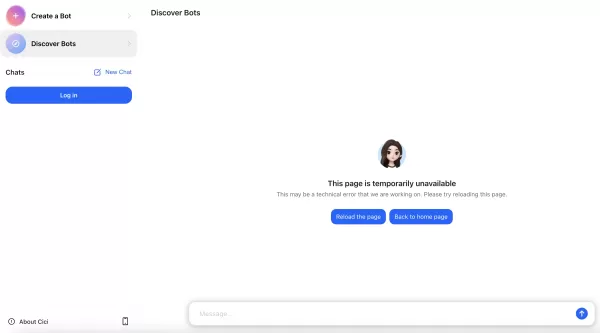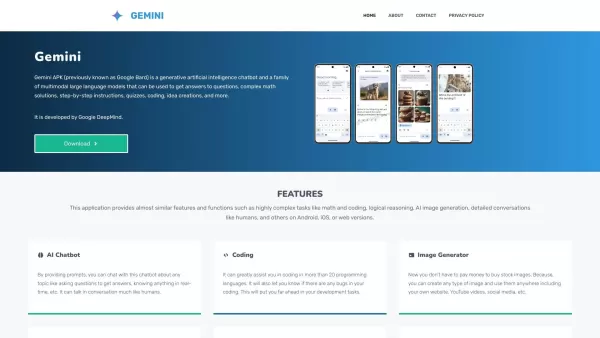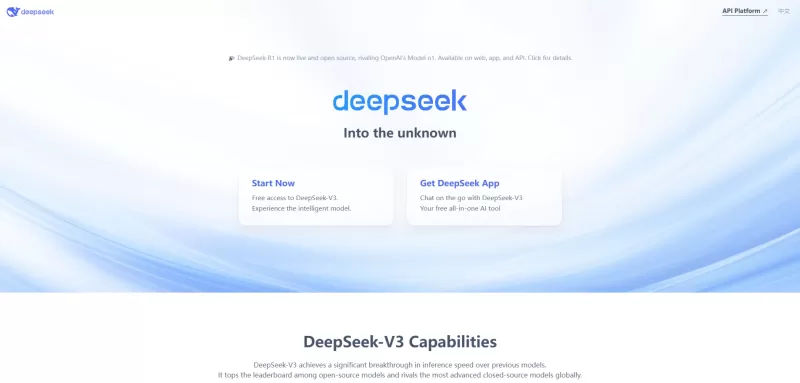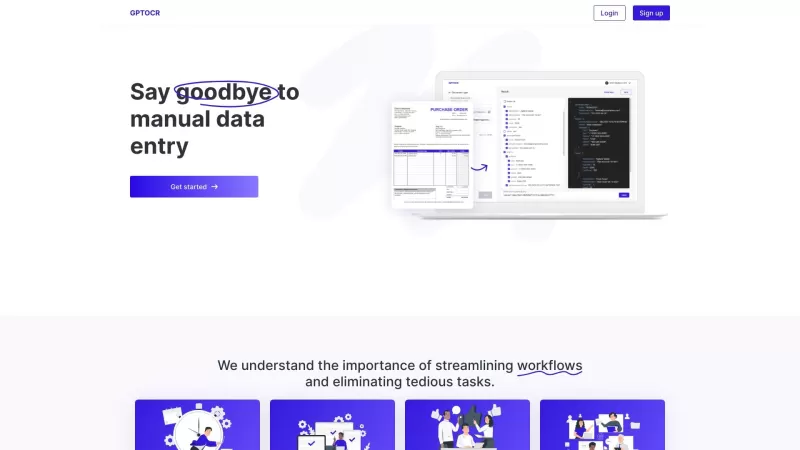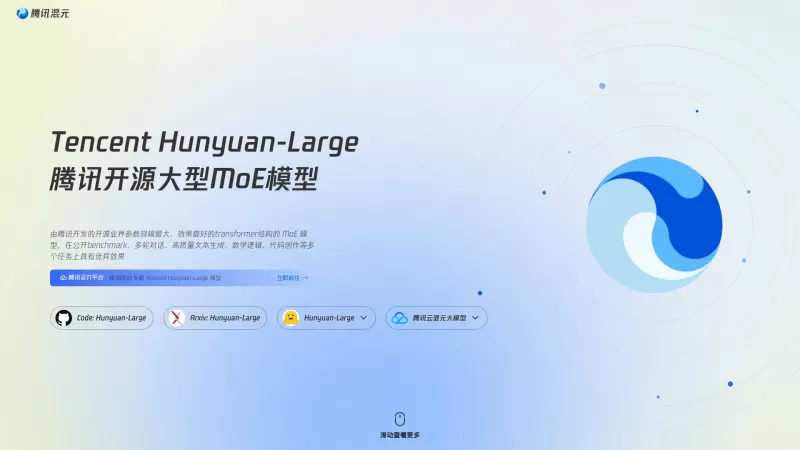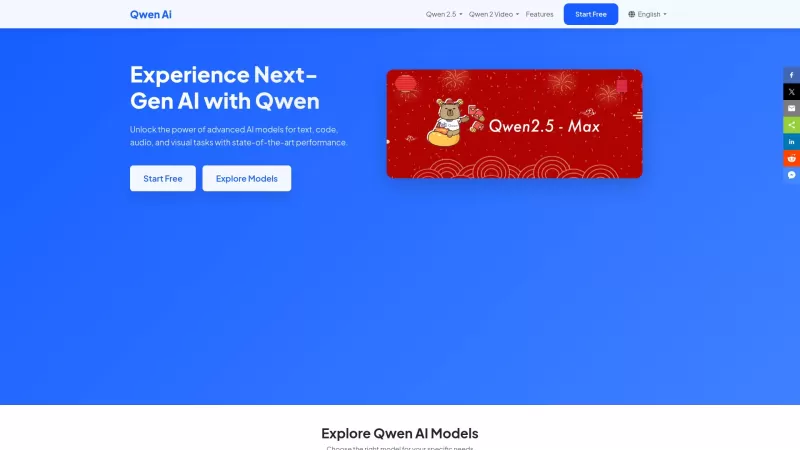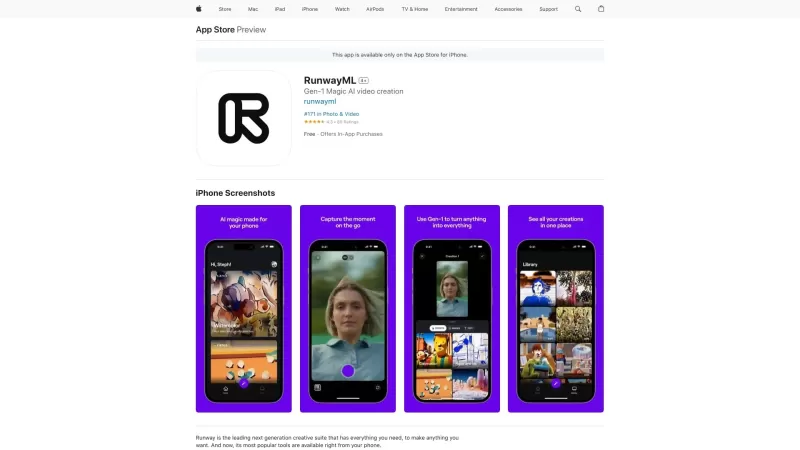SonicSense Enhances Robots with Human-Like Sensing via Acoustic Vibrations
Duke University's SonicSense: A Game-Changer in Robotic Sensing
Duke University's latest innovation, SonicSense, is set to revolutionize the way robots perceive and interact with their surroundings. By shifting away from traditional vision-based systems, SonicSense uses acoustic vibrations to give robots a new way to 'feel' the world around them, much like how humans use a combination of senses to navigate and understand their environment.
Challenges in Robotic Perception
Robots have long faced challenges in accurately perceiving and interacting with objects. While humans effortlessly integrate multiple senses, robots have been largely dependent on visual data. This limitation often hampers their ability to handle complex scenarios where visual cues alone are insufficient.
SonicSense: A Leap Forward
SonicSense addresses these limitations by introducing acoustic sensing into the mix. This technology allows robots to gather detailed information about objects through physical interactions, mimicking the human use of touch and sound. It's a significant step towards making robots more versatile and capable in understanding their environment.
Breaking Down SonicSense Technology
The core of SonicSense lies in a robotic hand with four fingers, each equipped with a contact microphone at the fingertip. These sensors capture the vibrations produced when the robot interacts with objects through actions like tapping, grasping, or shaking. What makes SonicSense stand out is its ability to filter out ambient noise, ensuring the data collected is as clean as possible.
Jiaxun Liu, the lead author of the study, shares, “We wanted to create a solution that could work with a wide variety of everyday objects, enhancing the robot's ability to 'feel' and understand the world around them.”
One of the most appealing aspects of SonicSense is its accessibility. The system is built from off-the-shelf components, including contact microphones typically used by musicians, and 3D-printed parts. With a total cost of just over $200, SonicSense is not only innovative but also affordable, paving the way for broader adoption and further development.
SonicSense: Object Perception from In-Hand Acoustic Vibration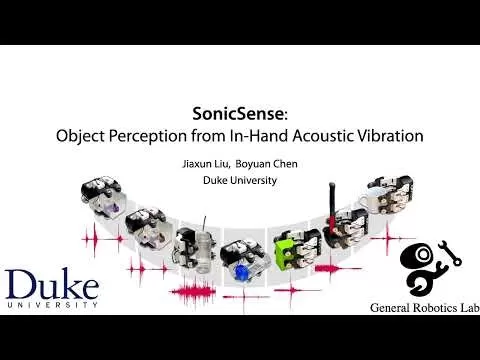
Watch this video on YouTubeAdvancing Beyond Visual Recognition
Traditional vision-based systems struggle with certain objects, such as those that are transparent, reflective, or have complex geometries. Professor Boyuan Chen explains, “While vision is crucial, sound can provide additional layers of information that might be invisible to the eye.”
SonicSense overcomes these challenges with its multi-finger approach and advanced AI algorithms. It can identify objects made of different materials, understand complex shapes, and even figure out what's inside containers – tasks that are tough for vision-only systems.
By gathering data from all four fingers at once, SonicSense can create detailed 3D reconstructions and accurately determine material composition. It might take up to 20 interactions for new objects, but for familiar ones, just four interactions can be enough for accurate identification.
Real-World Applications and Testing
SonicSense isn't just a lab experiment; it has real-world potential. It's been tested in scenarios where traditional robotic systems struggle, like counting dice in a container, measuring liquid levels in bottles, and reconstructing 3D shapes through surface exploration.
These capabilities are crucial for industries like manufacturing and quality control, where precise object manipulation is key. Unlike earlier acoustic sensing attempts, SonicSense's multi-finger approach and noise filtering make it ideal for dynamic industrial settings where multiple sensory inputs are needed.
The research team is now working on expanding SonicSense's capabilities to handle multiple objects at once. Professor Chen is optimistic, saying, “This is just the beginning. We see SonicSense being integrated into more advanced robotic hands, enabling robots to perform tasks that require a delicate sense of touch.”
They're also developing object-tracking algorithms to help robots navigate and interact in cluttered, dynamic environments. Plans to add pressure and temperature sensing will further enhance the system's human-like manipulation capabilities.
The Bottom Line
SonicSense marks a significant advancement in robotic perception, showing how acoustic sensing can enhance visual systems to create more versatile and adaptable robots. As this technology evolves, its affordability and wide-ranging applications suggest a future where robots can interact with their environment with a sophistication that rivals human capabilities.
Related article
 Hugging Face Launches Pre-Orders for Reachy Mini Desktop Robots
Hugging Face invites developers to explore its latest robotics innovation.The AI platform announced Wednesday that it’s now accepting pre-orders for its Reachy Mini desktop robots. The company first s
Hugging Face Launches Pre-Orders for Reachy Mini Desktop Robots
Hugging Face invites developers to explore its latest robotics innovation.The AI platform announced Wednesday that it’s now accepting pre-orders for its Reachy Mini desktop robots. The company first s
 Nvidia charges ahead with humanoid robotics aided by the cloud
Nvidia is charging full speed ahead into the realm of humanoid robotics, and they're not holding back. At the Computex 2025 trade show in Taiwan, they unveiled a series of innovati
Nvidia charges ahead with humanoid robotics aided by the cloud
Nvidia is charging full speed ahead into the realm of humanoid robotics, and they're not holding back. At the Computex 2025 trade show in Taiwan, they unveiled a series of innovati
 Top 5 Autonomous Robots for Construction Sites in April 2025
The construction industry is undergoing a remarkable transformation, driven by the rise of robotics and automation. With the global market for construction robots projected to reach $3.5 billion by 2030, these innovations are revolutionizing safety and efficiency on job sites. From autonomous pile d
Comments (24)
0/200
Top 5 Autonomous Robots for Construction Sites in April 2025
The construction industry is undergoing a remarkable transformation, driven by the rise of robotics and automation. With the global market for construction robots projected to reach $3.5 billion by 2030, these innovations are revolutionizing safety and efficiency on job sites. From autonomous pile d
Comments (24)
0/200
![WillieRodriguez]() WillieRodriguez
WillieRodriguez
 September 12, 2025 at 6:30:38 PM EDT
September 12, 2025 at 6:30:38 PM EDT
Les robots avec SonicSense ressemblent enfin à quelque chose de Blade Runner! Mais sérieusement, cette technologie audio pourrait vraiment changer la donne pour les robots domestiques. Imaginez qu'ils puissent entendre une fuite d'eau avant même de la voir... ou détecter un bébé qui pleure à travers une porte. 🚀 #InnovationPratique


 0
0
![JackRoberts]() JackRoberts
JackRoberts
 August 27, 2025 at 8:59:25 AM EDT
August 27, 2025 at 8:59:25 AM EDT
This SonicSense tech sounds wild! 🤯 Robots feeling the world through sound vibrations? It's like giving them superhuman hearing. Can't wait to see how this shakes up robotics!


 0
0
![FrankMartínez]() FrankMartínez
FrankMartínez
 August 14, 2025 at 5:00:59 AM EDT
August 14, 2025 at 5:00:59 AM EDT
This SonicSense tech is wild! Robots 'hearing' their surroundings? It’s like giving them superhero senses. Can’t wait to see this in action! 🤖


 0
0
![ArthurSanchez]() ArthurSanchez
ArthurSanchez
 July 27, 2025 at 9:20:21 PM EDT
July 27, 2025 at 9:20:21 PM EDT
SonicSense sounds like a sci-fi gadget come to life! Using sound waves to help robots 'feel' their surroundings is wild. I wonder how this stacks up against human senses—could robots end up navigating better than us? 🤔


 0
0
![AnthonyJohnson]() AnthonyJohnson
AnthonyJohnson
 April 23, 2025 at 4:59:01 AM EDT
April 23, 2025 at 4:59:01 AM EDT
¡SonicSense es increíble! Me encanta cómo mejora la percepción de los robots con vibraciones acústicas. Es como darles un nuevo sentido. El único problema es que es un poco caro, pero vale la pena por la innovación. 🤖


 0
0
![GeorgeScott]() GeorgeScott
GeorgeScott
 April 21, 2025 at 4:37:15 PM EDT
April 21, 2025 at 4:37:15 PM EDT
SonicSense is mind-blowing! It's amazing how it uses sound to help robots sense their environment. The only issue is it's a bit too technical for me to fully understand. But for robotics enthusiasts, this is groundbreaking! 🤖🔊


 0
0
Duke University's SonicSense: A Game-Changer in Robotic Sensing
Duke University's latest innovation, SonicSense, is set to revolutionize the way robots perceive and interact with their surroundings. By shifting away from traditional vision-based systems, SonicSense uses acoustic vibrations to give robots a new way to 'feel' the world around them, much like how humans use a combination of senses to navigate and understand their environment.
Challenges in Robotic Perception
Robots have long faced challenges in accurately perceiving and interacting with objects. While humans effortlessly integrate multiple senses, robots have been largely dependent on visual data. This limitation often hampers their ability to handle complex scenarios where visual cues alone are insufficient.
SonicSense: A Leap Forward
SonicSense addresses these limitations by introducing acoustic sensing into the mix. This technology allows robots to gather detailed information about objects through physical interactions, mimicking the human use of touch and sound. It's a significant step towards making robots more versatile and capable in understanding their environment.
Breaking Down SonicSense Technology
The core of SonicSense lies in a robotic hand with four fingers, each equipped with a contact microphone at the fingertip. These sensors capture the vibrations produced when the robot interacts with objects through actions like tapping, grasping, or shaking. What makes SonicSense stand out is its ability to filter out ambient noise, ensuring the data collected is as clean as possible.
Jiaxun Liu, the lead author of the study, shares, “We wanted to create a solution that could work with a wide variety of everyday objects, enhancing the robot's ability to 'feel' and understand the world around them.”
One of the most appealing aspects of SonicSense is its accessibility. The system is built from off-the-shelf components, including contact microphones typically used by musicians, and 3D-printed parts. With a total cost of just over $200, SonicSense is not only innovative but also affordable, paving the way for broader adoption and further development.
SonicSense: Object Perception from In-Hand Acoustic Vibration
Advancing Beyond Visual Recognition
Traditional vision-based systems struggle with certain objects, such as those that are transparent, reflective, or have complex geometries. Professor Boyuan Chen explains, “While vision is crucial, sound can provide additional layers of information that might be invisible to the eye.”
SonicSense overcomes these challenges with its multi-finger approach and advanced AI algorithms. It can identify objects made of different materials, understand complex shapes, and even figure out what's inside containers – tasks that are tough for vision-only systems.
By gathering data from all four fingers at once, SonicSense can create detailed 3D reconstructions and accurately determine material composition. It might take up to 20 interactions for new objects, but for familiar ones, just four interactions can be enough for accurate identification.
Real-World Applications and Testing
SonicSense isn't just a lab experiment; it has real-world potential. It's been tested in scenarios where traditional robotic systems struggle, like counting dice in a container, measuring liquid levels in bottles, and reconstructing 3D shapes through surface exploration.
These capabilities are crucial for industries like manufacturing and quality control, where precise object manipulation is key. Unlike earlier acoustic sensing attempts, SonicSense's multi-finger approach and noise filtering make it ideal for dynamic industrial settings where multiple sensory inputs are needed.
The research team is now working on expanding SonicSense's capabilities to handle multiple objects at once. Professor Chen is optimistic, saying, “This is just the beginning. We see SonicSense being integrated into more advanced robotic hands, enabling robots to perform tasks that require a delicate sense of touch.”
They're also developing object-tracking algorithms to help robots navigate and interact in cluttered, dynamic environments. Plans to add pressure and temperature sensing will further enhance the system's human-like manipulation capabilities.
The Bottom Line
SonicSense marks a significant advancement in robotic perception, showing how acoustic sensing can enhance visual systems to create more versatile and adaptable robots. As this technology evolves, its affordability and wide-ranging applications suggest a future where robots can interact with their environment with a sophistication that rivals human capabilities.
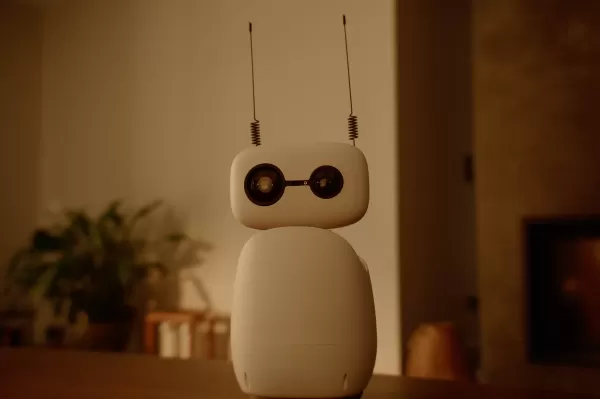 Hugging Face Launches Pre-Orders for Reachy Mini Desktop Robots
Hugging Face invites developers to explore its latest robotics innovation.The AI platform announced Wednesday that it’s now accepting pre-orders for its Reachy Mini desktop robots. The company first s
Hugging Face Launches Pre-Orders for Reachy Mini Desktop Robots
Hugging Face invites developers to explore its latest robotics innovation.The AI platform announced Wednesday that it’s now accepting pre-orders for its Reachy Mini desktop robots. The company first s
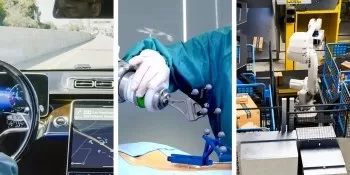 Nvidia charges ahead with humanoid robotics aided by the cloud
Nvidia is charging full speed ahead into the realm of humanoid robotics, and they're not holding back. At the Computex 2025 trade show in Taiwan, they unveiled a series of innovati
Nvidia charges ahead with humanoid robotics aided by the cloud
Nvidia is charging full speed ahead into the realm of humanoid robotics, and they're not holding back. At the Computex 2025 trade show in Taiwan, they unveiled a series of innovati
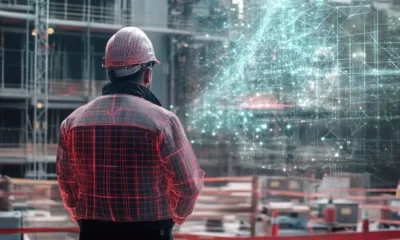 Top 5 Autonomous Robots for Construction Sites in April 2025
The construction industry is undergoing a remarkable transformation, driven by the rise of robotics and automation. With the global market for construction robots projected to reach $3.5 billion by 2030, these innovations are revolutionizing safety and efficiency on job sites. From autonomous pile d
Top 5 Autonomous Robots for Construction Sites in April 2025
The construction industry is undergoing a remarkable transformation, driven by the rise of robotics and automation. With the global market for construction robots projected to reach $3.5 billion by 2030, these innovations are revolutionizing safety and efficiency on job sites. From autonomous pile d
 September 12, 2025 at 6:30:38 PM EDT
September 12, 2025 at 6:30:38 PM EDT
Les robots avec SonicSense ressemblent enfin à quelque chose de Blade Runner! Mais sérieusement, cette technologie audio pourrait vraiment changer la donne pour les robots domestiques. Imaginez qu'ils puissent entendre une fuite d'eau avant même de la voir... ou détecter un bébé qui pleure à travers une porte. 🚀 #InnovationPratique


 0
0
 August 27, 2025 at 8:59:25 AM EDT
August 27, 2025 at 8:59:25 AM EDT
This SonicSense tech sounds wild! 🤯 Robots feeling the world through sound vibrations? It's like giving them superhuman hearing. Can't wait to see how this shakes up robotics!


 0
0
 August 14, 2025 at 5:00:59 AM EDT
August 14, 2025 at 5:00:59 AM EDT
This SonicSense tech is wild! Robots 'hearing' their surroundings? It’s like giving them superhero senses. Can’t wait to see this in action! 🤖


 0
0
 July 27, 2025 at 9:20:21 PM EDT
July 27, 2025 at 9:20:21 PM EDT
SonicSense sounds like a sci-fi gadget come to life! Using sound waves to help robots 'feel' their surroundings is wild. I wonder how this stacks up against human senses—could robots end up navigating better than us? 🤔


 0
0
 April 23, 2025 at 4:59:01 AM EDT
April 23, 2025 at 4:59:01 AM EDT
¡SonicSense es increíble! Me encanta cómo mejora la percepción de los robots con vibraciones acústicas. Es como darles un nuevo sentido. El único problema es que es un poco caro, pero vale la pena por la innovación. 🤖


 0
0
 April 21, 2025 at 4:37:15 PM EDT
April 21, 2025 at 4:37:15 PM EDT
SonicSense is mind-blowing! It's amazing how it uses sound to help robots sense their environment. The only issue is it's a bit too technical for me to fully understand. But for robotics enthusiasts, this is groundbreaking! 🤖🔊


 0
0

